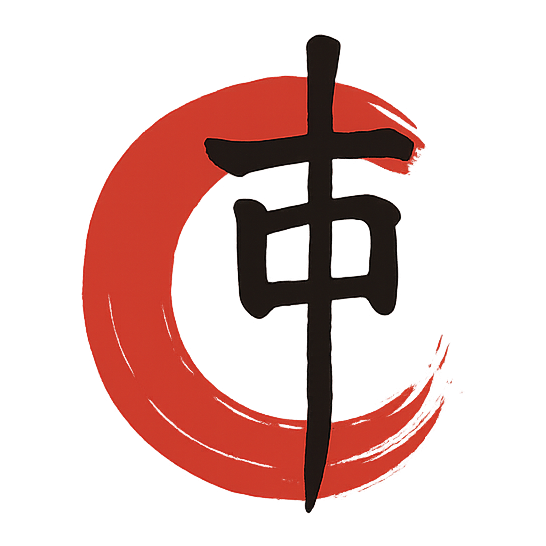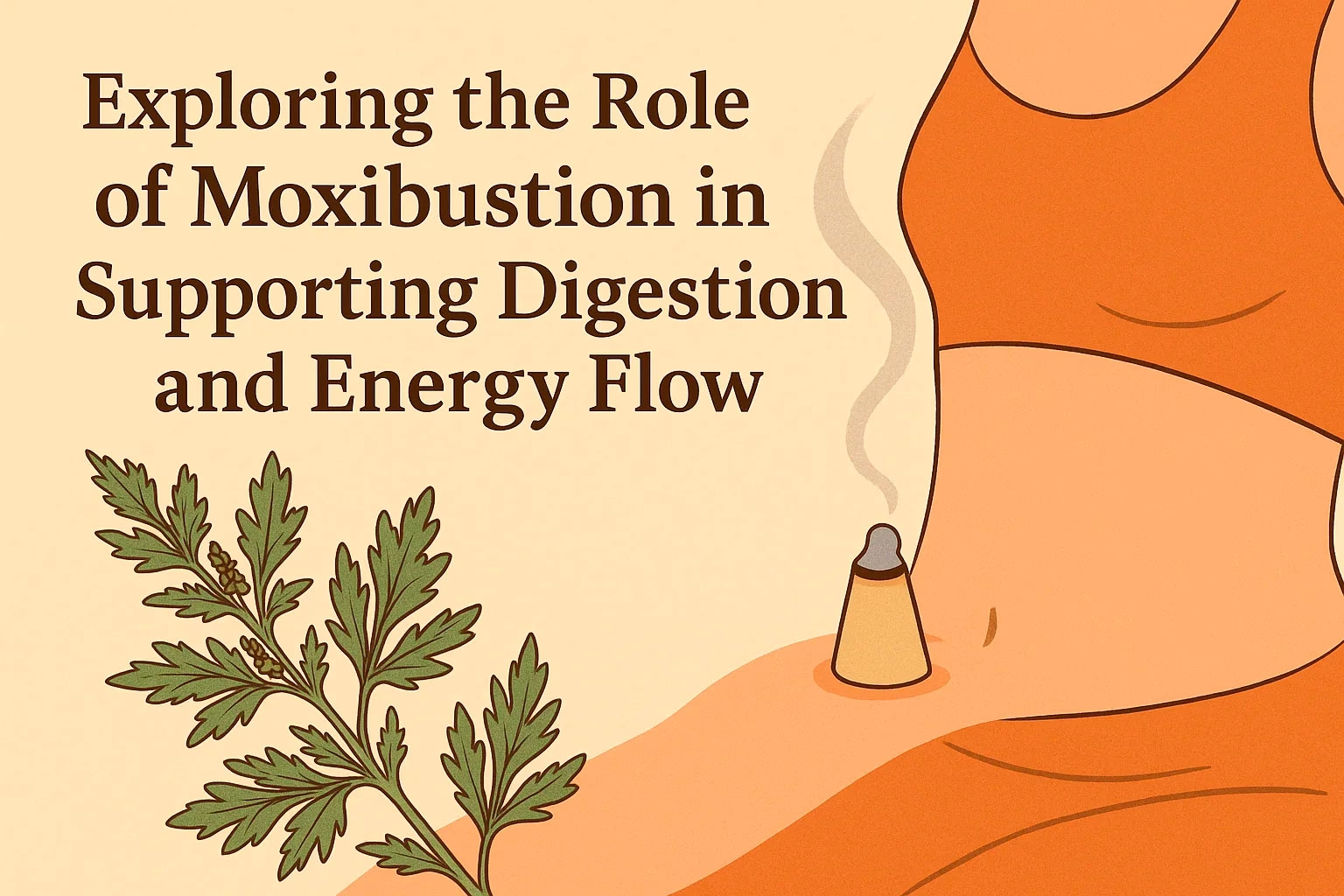Exploring the Role of Moxibustion in Supporting Digestion and Energy Flow
🔶 Introduction
Digestive disorders such as bloating, loose stools, fatigue after eating, and cold sensations in the abdomen are common complaints, especially in modern lifestyles marked by irregular eating habits, cold food consumption, and chronic stress. In Traditional Chinese Medicine (TCM), many of these issues are linked to a weakness of the Spleen and Stomach, organs central to the “Middle Jiao”—the body’s digestive and energy-producing center.
One powerful yet gentle therapy used in TCM for restoring digestive function is moxibustion (艾灸). This ancient technique uses the heat of burning mugwort (Artemisia argyi) to warm specific acupuncture points, stimulate Qi flow, dispel Cold and Dampness, and tonify the Spleen.
This article explores how moxibustion works, when it’s most effective, and how it supports the digestive system according to TCM principles.
🔶 What Is Moxibustion?
Moxibustion is a traditional heat therapy that involves burning dried mugwort (moxa) near or directly on the skin over specific acupuncture points. It is often used in conjunction with acupuncture, but it can also be a standalone treatment.
Two common types of moxibustion:
- Direct moxibustion: A small cone of moxa is placed on the skin and burned.
- Indirect moxibustion: Moxa is burned above the skin using moxa sticks, warming boxes, or placed on a slice of ginger or garlic.
The warming energy of moxa is used to:
- Dispel Cold
- Resolve Dampness
- Tonify Yang
- Promote circulation of Qi and Blood
🔶 The Role of the Spleen and Stomach in Digestion (TCM View)
In TCM, the Spleen and Stomach are the primary organs responsible for digesting food, transforming nutrients, and producing Qi and Blood. They form the core of the Middle Burner (Middle Jiao) and are especially vulnerable to Cold, Dampness, and deficiency.
Common digestive imbalances treated with moxibustion include:
- Spleen Qi Deficiency: Fatigue, bloating, poor appetite, soft stools.
- Cold in the Stomach: Pain that improves with warmth and pressure.
- Dampness Accumulation: Heaviness, foggy head, mucus in stools.
- Yang Deficiency: Chronic loose stools, abdominal cold, low energy.
🔶 How Moxibustion Benefits Digestive Health
✅ 1. Warms the Middle Jiao
Moxa’s thermal properties are ideal for treating Cold patterns that impair digestion. By warming the Spleen and Stomach, moxibustion enhances enzymatic action and promotes smoother digestion.
✅ 2. Tonifies Spleen Qi and Yang
When applied over points like CV12 or ST36, moxa helps boost Spleen Qi, improving energy, appetite, and nutrient absorption.
✅ 3. Dispels Dampness and Cold
In patients with bloating, sluggish digestion, or watery stools due to Dampness, moxibustion clears internal Cold and stimulates metabolic activity.
✅ 4. Promotes Qi and Blood Flow
Warming specific meridians aids in circulation, reduces abdominal pain, and enhances assimilation of food.
🔶 Key Acupoints for Digestive Moxibustion
Here are some commonly used acupoints for improving digestive function through moxibustion:
| Point | Location | Function |
|---|---|---|
| CV12 (Zhongwan) | Midline of upper abdomen | Harmonizes the Stomach, tonifies Spleen, resolves Dampness |
| ST36 (Zusanli) | Below the kneecap, 3 cun down | Boosts digestion, strengthens Qi and Blood, regulates immune function |
| SP6 (Sanyinjiao) | Inner leg, above the ankle | Tonifies Spleen and Kidneys, resolves Dampness |
| BL20 (Pishu) | Back, near T11 vertebra | Tonifies Spleen and transforms Damp |
| CV8 (Shenque) | Navel | Warms Yang, rescues collapse (commonly used with salt or ginger moxa) |
💡 Note: CV8 is never needled but is often used with moxibustion in severe Cold deficiency cases.
🔶 Clinical Applications
✅ Chronic Diarrhea and Loose Stools
- Moxibustion on CV12, ST36, and CV8 helps restore digestive fire, especially in Spleen Yang deficiency.
✅ Cold-Pattern Abdominal Pain
- Indirect moxa over CV8 (with ginger or salt) effectively warms the center and relieves pain.
✅ Fatigue After Eating
- Tonifying the Spleen with moxa over ST36 and BL20 improves energy conversion from food.
✅ Postpartum or Elderly Weak Digestion
- Warming moxa therapy supports weak digestion in individuals with Qi and Yang decline.
🔶 Modern Research on Moxibustion and Digestion
Scientific studies have shown that moxibustion:
- Increases microcirculation and blood flow to the gastrointestinal organs.
- Enhances gastrointestinal motility, relieving constipation or sluggish digestion.
- Has a regulatory effect on the autonomic nervous system, promoting a balanced digestive response.
Moxibustion is now used in integrative settings for conditions such as IBS, gastric ulcers, and functional dyspepsia.
🔶 Safety and Considerations
While generally safe, moxibustion should be:
- Performed in a well-ventilated space (due to smoke).
- Avoided in febrile or heat conditions.
- Used cautiously on pregnant women and individuals with neuropathy or impaired sensation.
For at-home use, smokeless moxa sticks or moxa warmers can offer accessible options, though professional guidance is always recommended.
🔶 Conclusion
Moxibustion is a time-tested therapy in Traditional Chinese Medicine that offers a gentle, natural, and effective way to support digestive health, especially in cases of Cold, Dampness, or Spleen Qi deficiency. By warming the Middle Jiao and enhancing the flow of Qi and Blood, moxa not only treats symptoms but addresses the root cause of digestive imbalance.
In a world of cold drinks, stress, and irregular eating, a little warmth from mugwort may be the spark your digestion needs.


发表回复